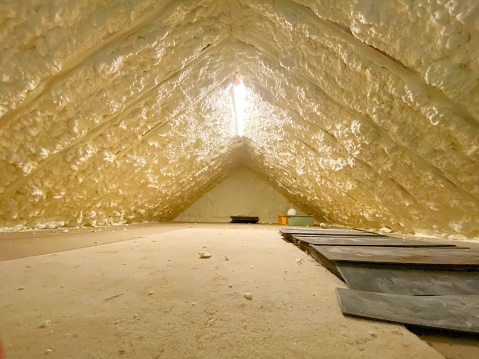As temperatures drop, ensuring your home stays warm and comfortable becomes a top priority. One of the most effective ways to achieve this is through proper insulation, including the option of adding extra spray foam insulation. But how do you determine if your home truly needs this additional layer of protection?
In this guide, we provide practical tips and insights to help you assess your insulation needs and make informed decisions for the colder months ahead.
How to Insulate Your Home for the Colder Months?
Insulation requirements vary significantly based on your geographic location and the type of insulation selected. Generally, an airtight seal is essential to protect your home from harsh weather and maintain warmth throughout the winter season.
To effectively insulate your home, consider the following steps:
- Choose an insulation material that balances cost-efficiency and thermal performance.
- Apply high-quality insulation to your living spaces, tailored to your budget and specific requirements.
- Follow manufacturer installation guidelines meticulously to ensure proper sealing and long-lasting insulation.
Key Considerations for Home Insulation in Winter
When selecting insulation, keep these important points in mind:
1. Choose the Right Insulation Type for Your Home
There are various types of insulation such as fiberglass, cellulose, spray foam, and rigid foam boards. Each offers different levels of effectiveness and cost. Selecting the appropriate insulation type tailored to your home’s construction and climate is crucial for optimal energy savings.
2. Ensure Adequate Insulation Coverage
Having a sufficient amount of insulation installed is key to preventing heat loss. Consider performing an energy audit or consulting a professional to determine if your current insulation meets the necessary R-value standards for your region.
3. Maintain Insulation Throughout the Cold Season
Once properly insulated, maintaining your home’s airtight seal and checking for any drafts or damage will help sustain warmth and efficiency during the winter months.
Effective Tips for Insulating Your Home in the Winter
Proper insulation involves not only choosing the right materials but also applying best practices to maximize heat retention. Below are essential tips to keep your home cozy during cold seasons:
Insulate Your Home Properly
Utilize professional techniques to seal all gaps and leaks in your home’s exterior. Thoroughly clean and prepare surfaces to ensure insulation adheres well. Pay special attention to windows, doors, attics, and basements to prevent drafts and energy loss. Properly insulated glass windows or adding storm windows can significantly enhance thermal efficiency.
Keep Your Home Insulated During the Colder Months
Maintain consistent warmth by keeping doors and windows closed when temperatures drop, minimizing heat escape. Use programmable thermostats and energy-efficient heating systems to optimize energy use. Additionally, consider supplemental heating ventilation and air conditioning (HVAC) services to enhance comfort while reducing energy bills.
Conclusion
Properly insulating your home for colder months not only lowers energy costs but also safeguards your living space from harsh winter conditions. By selecting the right insulation materials, ensuring adequate installation, and maintaining your home’s airtightness, you create a warm, energy-efficient environment that withstands cold weather effectively.
Remember these key takeaways:
- Choose insulation suited for your climate and home design to maximize thermal protection.
- Insulate all critical areas including walls, floors, ceilings, doors, and windows.
- Maintain insulation integrity throughout winter by sealing gaps and controlling ventilation wisely.
If you’re interested in learning more about How Often Should You Clean Your Gutters, please visit our dedicated Real Estate category for comprehensive resources and expert advice.
Understanding the Benefits of Spray Foam Insulation
Spray foam insulation has gained popularity due to its superior sealing capabilities and energy efficiency. Unlike traditional insulation types, spray foam expands upon application, filling even the smallest cracks and crevices, which effectively reduces air leakage. This not only keeps the indoor temperature stable but also minimizes moisture intrusion, preventing mold growth and structural damage. Additionally, spray foam has a higher R-value per inch compared to other insulation materials, providing enhanced thermal resistance within a smaller footprint. Homeowners investing in spray foam often enjoy lower utility bills, increased comfort, and improved indoor air quality, making it an excellent option for those aiming to upgrade their home’s insulation system efficiently.

























